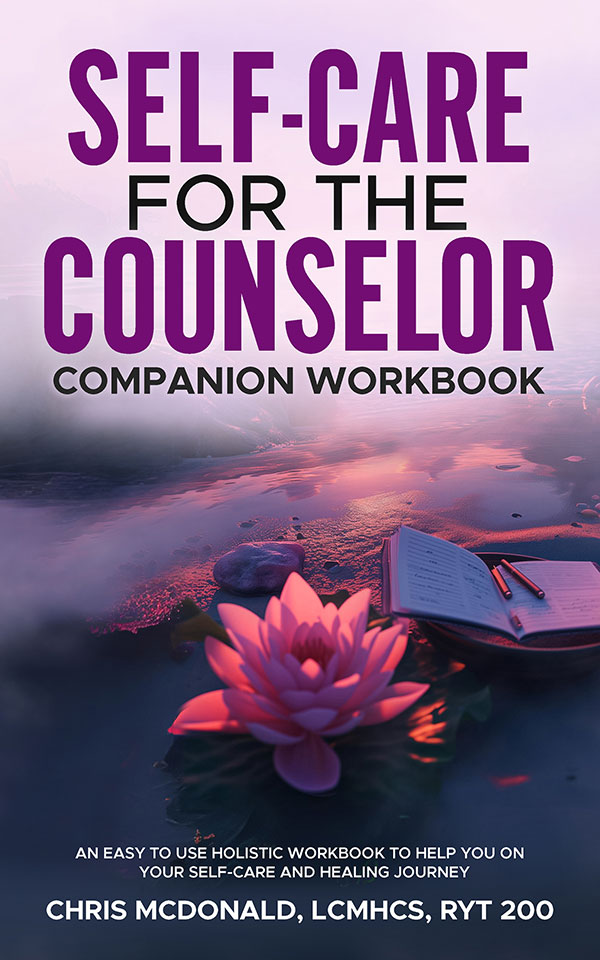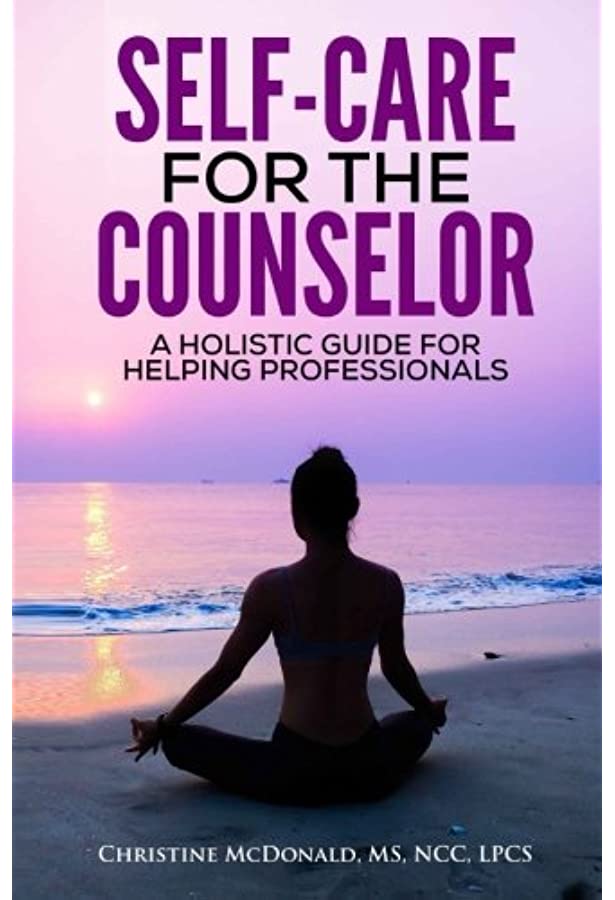What is holistic layering and what are its benefits? How can you integrate mind, body, and spirit into every one of your therapy sessions?
In this first holistic short, I’m going to discuss what holistic layering is and how it can help you in your client sessions. I will discuss how to begin your holistic layering sessions, understanding your clients individual needs, and the importance of working these techniques along with your client and I will take you through a quick holistic layering walkthrough.
Connect With Me
Instagram @holisticcounselingpodcast
Join the private Facebook group
Sign up for my free email course: www.holisticcounselingpodcast.com
Rate, review, and subscribe to this podcast on Apple Podcasts, Stitcher, TuneIn, Spotify, and Google Podcasts.
Transcript
Chris McDonald: Are you interested in learning a super effective holistic strategy called layering that integrates body, mind, and spirit into each and every session? In this short episode, I explore what this is and give you a sample session and discuss how you can apply it right away. This is Holistic Counseling, the podcast for mental health therapists who want to deepen their knowledge of holistic modalities and build their practice with confidence.
I'm your host, Chris McDonald, licensed therapist. I am so glad you're here for the journey.
Hey everyone, welcome to today's. I wanted to introduce some holistic shorts, so these are gonna be much shorter solo episodes under the 10 minute mark. So these will be for days when you wanna still listen in, but you don't have a lot on time, really short on time, but you still wanna have some of those holistic modalities or other ways to practice that you can kind of get in little blips.
So sometimes I know that helps for learning too, just to have short amount of time instead of a 45 minute episode. I know those are hard to. But I thank you for tuning in today for this. So today I'm gonna talk about what is holistic layering, what is that, how to use it, and some of the benefits. So what is this holistic layering?
What does this mean? So this, I'm talking about four holistic sessions that you might do with clients. So what does this mean? So it can incorporate. All parts of body, mind, and spirit in one session. So combining all of these together somehow, how do we do this? So I wanted to give you, start with an example.
Anything I share by the way about clients is just in generalities and not for a specific client, just to protect privacy and confidentiality. So I have a client who is in her thirties, has multiple traumas. We've done a lot of holistic things together. She's very open-minded, very spiritually based. So she really wants to embrace the holistic side of things, just to let you know where she's coming from as far as how I did this layering session.
So how did we start? So we start with just a quick check-in with some brief talk therapy. So for me, that's more of getting into the mind, right? What are we gonna focus on today and before we dive much further, We'll move into grounding. So grounding for me, I might do some body scans or just noticing, using mindfulness, noticing the temperature of the room, other sensations in the body.
I do a check-in with mind, which is check in with your mind. Is it busy? Is it active or is it more. Then checking emotion. What are you feeling today? What emotion is there? Just noticing if it's a big emotion, a small one, or more neutral, and then checking in, you can go deeper with if you wanna get more into the emotion side.
What color is that emotion? What size, what shape? what texture? So it depends on your client. And I know I have some that struggle with abstract, so that might be too difficult for them. So just knowing your client and, and maybe going with that. So the grounding, again, you can do mind with checking in their mind, their emotion, checking in, any tension in the body, and just have them mentally scan their body.
Noticing where do you feel tension today? Just give us some attention without changing anything, noticing any tension that you. And this could be easy for you at this point to check in with breath. So noticing your breath, noticing if it's more short, shallow breaths in your chest, noticing without judgment or deeper breaths.
And you can do this with me while you're listening if you want. So it could be any of those or any combo of those for the grounding piece. And then a lot of times I move into, and what I did with this particular client was into a seated short yoga flow, and she's already familiar with yoga. She's already got a routine going, so I didn't have to go and explain as much about what yoga is.
But of course, that's important to remember with a new client. If you're using yoga in session and you have some training and supervision on this, You always gotta start with, especially for trauma informed yoga, to let them know that this is of course up to them if they wanna participate. So getting informed consent is essential, and then letting them know how long it'll be.
So this will be about five minutes or 10, whatever it is, and you can stop at any time. I always let them know If you feel pain, please stop. Let me know if it's too long that we're in one pose. You can just stop, go back to your breathing and just let me know too, and it's okay. We can stop at any time. So really trying to make it comfortable for them, letting them know they can practice with their eyes open or closed, or both a combo of both and just being present with them.
And if you're in person, you can also think about the environment. Do I wanna have the lights off or on what feels more comfortable? I know I hated my overhead lights in my in-person office, so I would get some standing floor lamps for a little softer light. I would get more of the warm light bulbs. So that matters too.
Noticing in-person, your distance between you and the client. Coming right out and asking, is this too close? Do I need, do you need me to move back? So trying to make it the most comfortable for them that you can, especially if they have a lot of trauma. Just keeping that in mind, being aware of sense.
Sometimes people are very sensitive to that. Uh, if you have a lot of diffusers, be cautious with that with your clients. Let them know that you do use that. Or if you wear perfume, just know that can trigger headaches or migraines for some people, especially sensitive people. So once you get past the initial setting up, also let them know that part of trauma-informed yoga is you do these exercises with them.
Cause a lot of clients don't want the all the attention. Focus on them. As you say, raise your arms up and you're not doing it with them. They're gonna get intimidated. So making sure that you're doing it with them and letting them know that that's just a quickie version of setting up for yoga and making it trauma-informed.
So a short yoga flow is just as an example for a seated flow. I might do some upper joint rotations. So this could be taking your hands and doing some risk circles and moving to the arms. You can do the elbows or the arms going one way, then the other. Rotating shoulders back. Doing what feels comfortable in their body.
I may do an alternating arm and leg exercise, which is a contralateral, which is alternating sides of the body, and then doing them both together. So left arm, right leg up, and then right arm left leg. And again, this is a shorty version. And then doing both lakes and arms knowing that they can modify at any time.
And that could be it. That could be the short flow that you do, like three exercises, and then bringing them back out of that, asking them to blink their eyes open. . And with this particular client, we did some brain spotting. So again, that was the body movement with the yoga. So we have mind, body, now spirit.
So we're gonna do some brain spotting. I did a brain spotting with this, and now of course if you don't know, do brain spotting. That's okay. You could add in your back to your top therapy. So with brain spotting with this particular client, she really connects to her higher self. This is something we've had discussions on and works for her.
So once we find our resource spot and find that calm space in the body. I may ask her to try to connect to her hire self. What does her hire self have to say about this? And you won't do this with just any client. Of course. We already had this set up that we've had these discussions preliminary. . And then the last part of layering was back to the body and we did some breath work.
So that's just to give you some idea of what a layering session could look like. You can also layer, if you use essential oils, adding that in with the rest of your session or tarot. Uh, maybe starting with that or just bringing out like one card and just saying pick a card if you're a person. Or have them pick from their.
And just sharing what it is and looking up what is that tarot card and what does it mean for them, and have them interpret, can also bring a crystal into a session on top of what you're already doing or energy healing. So sometimes it is just finding different things that you are trained in that you feel comfortable using and layering it in a session.
So do you use layer. As a listener with your clients. If not, give it a go instead of just one holistic modality. Why not add more? Right? Think of all the benefits that you can have by layering. It is so effective and that's why I like to do this, cuz I feel like it brings healing to a whole. Other level.
So if you haven't done it, I highly recommend and that wraps up another episode. Again, this was a holistic short of the Holistic Counseling podcast listeners, I appreciate you being here. Have you found this episode helpful in the podcast? Overall, please spread the word and share this episode with a colleague who might be interested in holistic counseling.
This can help us to further build our holistic. And once again, this is Chris McDonald sending each one of you much light and love. Till next time, take care. If you're loving in this show, will you rate, review, and subscribe on your favorite podcast platform. This can help us to reach more holistic therapists and bring even more impactful guests to the show.
And once again, thanks for being a show supporter.


